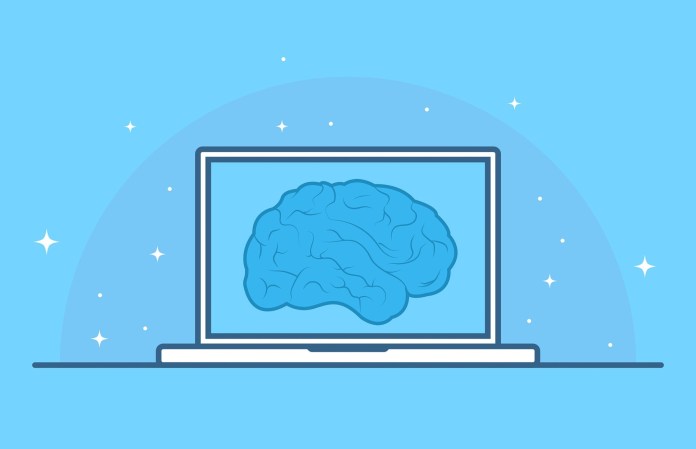Source:- marktechpost.com
For some years, Artificial Intelligence (AI) and Machine Learning (ML) becoming part and parcel of modern business solutions. While both of these technologies are making huge strides by helping businesses with intelligent means to address customer demands, these technologies are also going through a rapid transformation. Incorporating AI and Machine Learning capabilities into modern software solutions is also paving the way for intelligent automation. This is how we have access to an increasing number of self-service Machine Learning models, and several offerings for machine learning-as-a-service.
Such ready to use services and solutions are facing an increasing level of demand corresponding to the popularity and enhanced demand of the AI and Machine Learning technologies in the enterprise IT sector. Several statistics clearly confirm this steady growth of demand. According to the reports of Gartner, the adoption of AI-based solutions has increased more than 3 times in the past year alone. A report by MIT Sloan Management Review and Boston Consulting Group showed that more than 90% of businesses now consider AI to have the potential of driving growth by the year 2023.
From the above-mentioned statistics and reports, it is clear that the future of the enterprise IT and software is closely intertwined with the AI and Machine Learning (ML) capabilities. The AI and ML together will play the most important role in driving more accurate and audience-centric business decisions. In this regard, automated Machine Learning (ML) models will play a massive role.
AutoML: The AI and Machine Learning of the Future
Among the most dynamic and era-defining trends that are going to make the biggest impacts on ML-based solutions is the AutoML. AutoML basically refers to the automated Machine Learning, and it can help developers addressing complex scenarios with ready-to-use and adaptive solutions. AutoML basically consists of two key aspects, respectively, data acquisition and prediction. Following the data acquisition, all the intermediate steps are taken care of by the AutoML platform to deliver precise predictions.
Basically, the AutoML platforms fetch diverse datasets from the users, followed by the labeling of the categories. This is followed by preparing the data, ascribing the perfect algorithm for the respective dataset and optimization of the algorithm in the backdrop. At a certain point, the algorithm comes to a REST endpoint, which is used for making predictions. The process is quite different from the traditional workflow and process of training the Machine Learning models.
Not only the workflow and processes but in respect of capabilities and many aspects AutoML models differ from the traditional ML. AutoML platforms can also deliver and export fully trained mobile-compatible model to work in sync with the iOS and Android platforms. Thanks to these mobile compatible models developers can easily integrate them with their mobile apps. The best thing is, for integrating these models developers do not need to learn the tit-bits of Machine Learning.
Now, coming to scalability, AutoML models can be exported as a highly scalable package. By being packed into Docker containers, AutoML models allow developers to deploy them while maintaining a scalable capability to deal with different production environments. These models enable hosting the cluster of containers in a scalable manner.
AutoML: The Future and Promising Solutions
As the enterprise IT sector is increasingly getting on its feet to provide AutoML as a stand-alone service, we now have several AutoML services from the world’s leading tech companies. Some of the most promising AutoML services from leading tech companies include Google Cloud AutoML, Microsoft Custom Vision, and the Image Recognition solution from Clarifi.
AutoML ideally fills the gap between the cognitive APIs and custom Machine Learning (ML) platforms. It offers the perfect scope of customization without really forcing the developers to undertake a robust and scrupulously big workflow. While the cognitive APIs always makes the revelation of insights challenging, AutoML with its unmatched flexibility can deal with custom data and requirement of portability.
While every technology company and service provider is bent on democratizing the field of Machine Learning for the greater good of the enterprise IT, AutoML has now emerged as the promising future of Artificial Intelligence (AI). Thanks to AutoML the power and capability of AI could now be made available to the business analysts and the business leaders with strategic decision-making capacity.
Automated Machine Learning to Simplify and Augment UI: Microsoft Azure
Microsoft has been a forerunner in the field of Machine Learning based services and solutions with its Azure ML services. From 2018 December, the company has adopted the automated machine learning. Thanks to this, accelerating and simplifying the AI-based solutions has now become easier than ever before. Azure AutoML service will now help data scientists in a never-before manner and create more room for them to concentrate on strategic planning and other objectives.
The platform will also make AI available for a wider business audience across the niches. A vast majority of people who has little understanding and knowledge about the cutting-edge data science and the nitty-gritty of coding can now avail the power of latest Machine Learning algorithms. The Power BI, which allows data analyst’s access to Machine Learning is a great example of this.
Azure has just announced a new web UI based on automated Machine Learning (AutoML) in its own portal, and we can have a look to get a first-hand feel of the offerings.
The new AutoML UI from Microsoft Azure is a great example of how the Machine Learning technology can be made accessible to the general masses. This new AutoML UI offering business domain specialists command on cutting-edge analytics and algorithms without any knowledge of coding is a great example of how future AutoML based services will add more value to the enterprise IT development.
In the time to come, we can expect the automated machine learning to be subject to a variety of experiments. Different combinations of granular parameters and algorithms will be tried and tested on various Machine Learning (ML) models. More audience-specific and customized ML models based on user data will continue to come.
Wrapping Up
Already businesses are focused on data-driven decision making to take on the untapped business opportunities in their respective niches and among target audiences. The modern Business Analytics with the power of AI and ML has made huge progress in deciphering the customer and user data. Automated Machine Learning will only make this process speedier and effortless than ever before.


